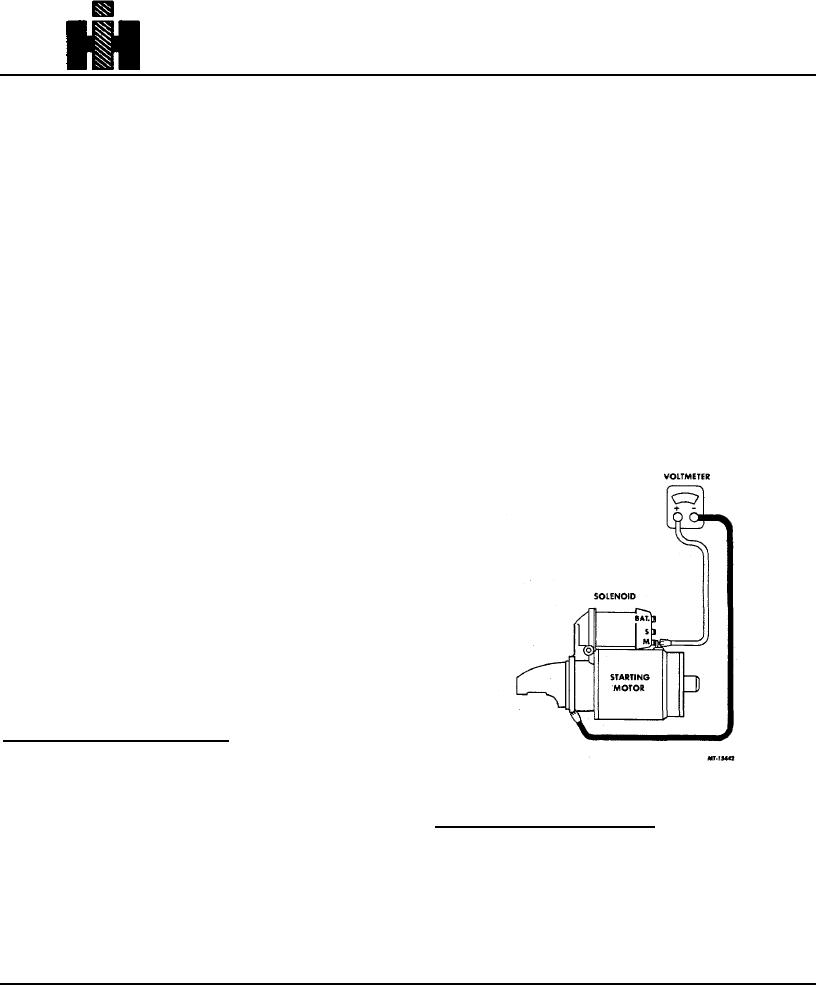
TRUCK SERVICE MANUAL
ELECTRICAL
Regardless of the construction, never operate the
If a reading of less than 9.6 volts is found, proceed
starting motor more than 30 seconds at a time without
to the next test.
pausing to allow it to cool for at least Z minutes.
Overheating caused by excessive cranking will seriously
damage the motor.
For the most part a volt-ampere tester (SE2283)
will be used in performing the starter tests and the
instruction manual supplied with the tester will provide
the detailed instructions using the volt-ampere tester.
NOTE: All illustrations of starting motor and circuit tests
show leads connected for NEGATIVE grounded system.
Reverse the positions of the leads when testing a
POSITIVE grounded system.
Make sure the volt
selector switch on the volt-ampere tester is positioned
properly for the voltage system being inspected.
Test No. 1 Cranking Voltage Test
This test tells us the overall condition of battery, starter,
Fig. 5 Cranking Voltage Test
cables or switches to determine if sufficient voltage is
available to operate ignition system when starter is in
operation.
Test No. 2 Battery Capacity Test
Connect voltmeter leads at the starter observing the
The battery capacity test is performed to determine
polarity, Fig. 5. Disconnect secondary coil lead to
if the battery is in satisfactory condition. See "Battery"
prevent engine from starting. Crank engine noting
Section B. If the battery passes this test, continue the
voltmeter reading (should be 9.6 volts or better with
next test.
12volt electrical system).
282

